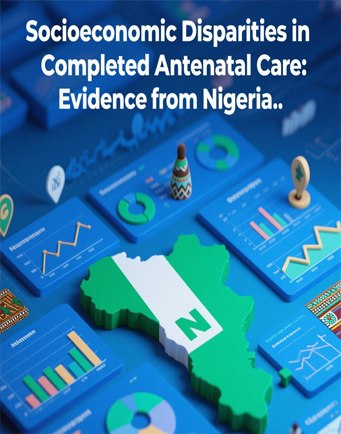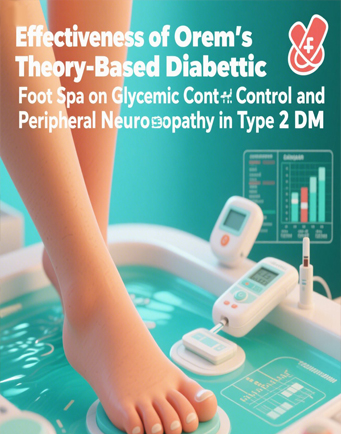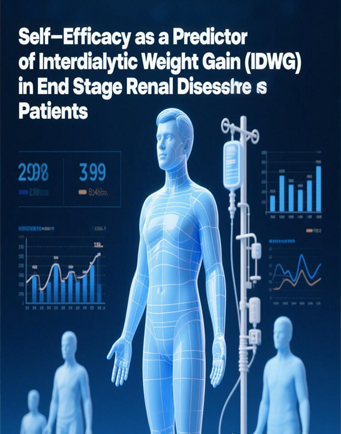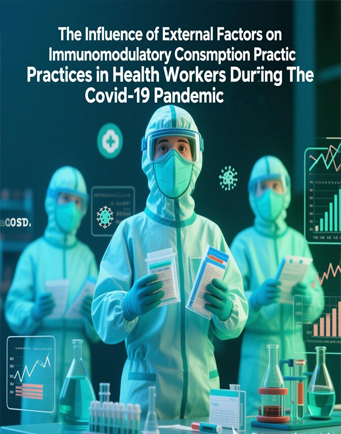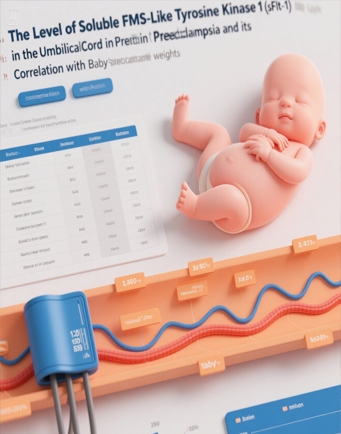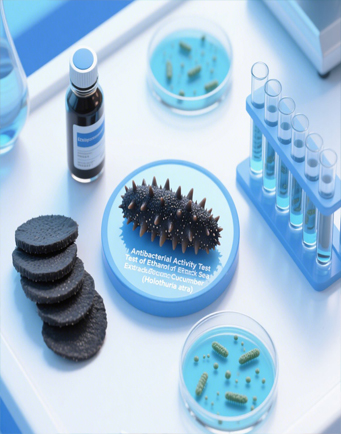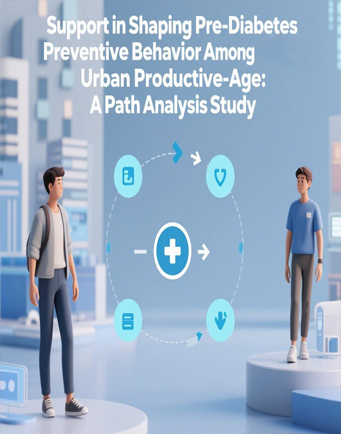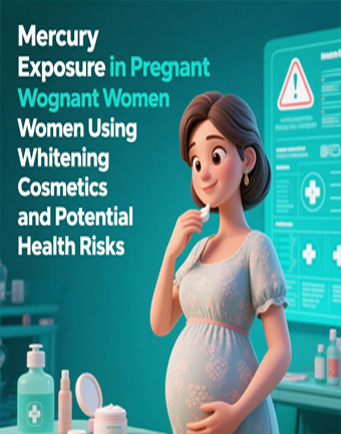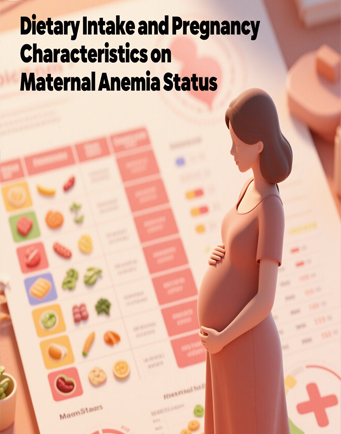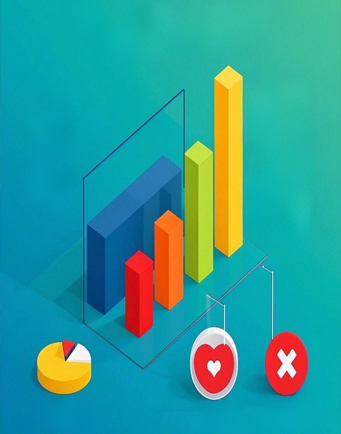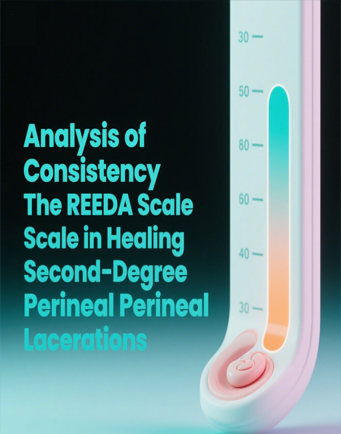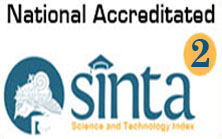Analysis of Risk Factors for Stunting in Central Java

Downloads
The prevalence of stunting in Indonesia was 24.4% in 2021 in Central Java at 20.9%, which is still above the WHO target of 20%. There are many direct and indirect risk factors that cause stunting events. The purpose of this study is to analyze the risk factors for stunting events in Central Java. This research is an observational study with a cross-sectional approach. The collected data was analyzed using the Chi-Square test to assess the relationship between the independent variable (risk factors) and the dependent variable (stunting incidence). In addition, the odds ratio calculation is used to determine the risk level of each factor in influencing the incidence of stunting. The population is all mothers who have toddlers aged 0-59 months in Central Java Province. Data were collected via Google Form for two weeks in December 2023 using the Accidental Sampling technique with a total of 2671 mothers involved in this research. The result shows that the prevalence of stunting is 24.3%. There was no relationship between maternal parity OR 0.865, working mother OR 0.878, maternal BMI OR 0.898, economic status OR 0.954, and the incidence of stunting in toddlers. There was a relationship between maternal education OR 2.120, maternal height OR 1.955, exclusive breastfeeding OR 1.616, the diet OR 3.160, gestational age OR 1.410, the birth weight OR 1.670, and the incidence of stunting in toddlers. It is concluded that several factors collaborate to the high number of stunting, which are maternal education, maternal height, exclusive breastfeeding, diet, gestational age, and birth weight. Further research needs to consider a wider sample, the number of other risk factors which are competency of health provider to diagnose stunting, family support, and extend the length of observation time.
Almatsier, A. (2010). Prinsip Dasar Ilmu Gizi. Jakarta: PT Gramedia Pustaka Utama.
Agustin, L. & Rahmawati, D. (2021). Hubungan Pendapatan Keluarga dengan Kejadian Stunting. Indonesian Journal of Midwifery (IJM), 4(1), 30-34. https://doi.org/10.35473/ijm.v4i1.715
Ainin, Q., Ariyanto, Y. & Kinanthi1, C. A. (2023). Hubungan Pendidikan Ibu, Praktik Pengasuhan Dan Sanitasi Lingkungan Dengan Kejadian Stunting Pada Balita Di Desa Lokus Stunting Wilayah Kerja Puskesmas Paron Kabupaten Ngawi. Qurotul Ainin,Yunus Ariyanto, Citra Anggun Kinanthi. Jurnal Kesehatan Masyarakat, 11(1), 89–95. https://doi.org/10.14710/jkm.v11i1.35848
Anindita, P. (2012). Hubungan Tingkat Pendidikan Ibu, Pendapatan Keluarga, Kecukupan Protein & Zinc dengan Stunting (Pendek) pada Balita Usia 6 35 Bulan di Kecamatan Tembalang Kota Semarang. Jurnal Kesehatan Masyarakat Universitas Diponegoro, 1(2), 617 - 626.
Aryastami, N. K., Shankar, A., Kusumawardani, N., Besral, B., Jahari, A. B., & Achadi, E. (2017). Low birth weight was the most dominant predictor associated with stunting among children aged 12–23 months in Indonesia. BMC nutrition, 3, 16. https://doi.org/10.1186/s40795-017-0130-x
Aryastami, N. K., & Tarigan, I. (2017). Kajian kebijakan dan penanggulangan masalah gizi stunting di Indonesia. Buletin Penelitian Kesehatan, 45(4), 233-240.
Baidho, F., -, W., Sucihati, F. & Pratama, Y. Y. (2021). Hubungan Tinggi Badan Ibu Dengan Kejadian Stunting Pada Balita Usia 0-59 Bulan Di Desa Argodadi Sedayu Bantul. Jurnal Kesehatan Komunitas Indonesia, 17(1), 275–283. https://doi.org/10.37058/jkki.v17i1.2227
Bishwakarma, R. (2011). Spatial Inequality in Children Nutrition in Nepal: Implications of Regional Context and Individual/Household Composition. Disertasi, University of Maryland, College Park, United States. Retrieved from: http://hdl.handle.net/1903/11683
Eliafiana, R., & Fadilah, T. F. (2022). Relationship between Mothers Birth Spacing and Incidence of Stunting in Children 24-59 months. Jurnal Biomedika Dan Kesehatan, 5(1), 42-49.
Fauziah, J., Trisnawati, K. D., Rini, K. P. S., & Putri, S. U. (2024). Stunting: Penyebab, Gejala, dan Pencegahan. Jurnal Parenting dan Anak, 1(2), 1-11. https://doi.org/10.47134/jpa.v1i2.220
Hamzah, W., Haniarti, H. & Anggraeny, R. (2021). Faktor Risiko Stunting Pada Balita. Jurnal Surya Muda, 3(1), 33–45. https://doi.org/10.38102/jsm.v3i1.77
Kementerian Kesehatan Republik Indonesia. (2021). Buku Saku Hasil Studi Status Gizi Indonesia (SSGI) Tahun 2021. Jakarta: Kementerian Kesehatan Republik Indonesia.
Kurniati, A., Lebuan, S., Syafar, M. & Hartati, N. (2023). Hubungan Pola Pemberian Makan Pada Balita Stunting di Puskesmas di Flores Timur. Inhealth: Indonesian Health Journal, 2(2), 93–110. https://doi.org/10.56314/inhealth.v2i12
Laksono, A. D., Wulandari, R. D., Amaliah, N., & Wisnuwardani, R. W. (2022). Stunting among children under two years in Indonesia: Does maternal education matter?. PloS one, 17(7), e0271509. https://doi.org/10.1371/journal.pone.0271509
Lating, Z., Dolang, M. W., Dusra, E., Hamka, H., & Saendrayani, W. O. S. (2023). Analisis manajemen kejadian stunting pada balita di Desa Waesamu tahun 2023. Jurnal Medika Husada, 3(2), 21-30. http://dx.doi.org/10.59744/jumeha.v3i2.44
Maryati, I., Annisa, N., & Amira, I. (2023). Faktor Dominan terhadap Kejadian Stunting Balita. Jurnal Obsesi: Jurnal Pendidikan Anak Usia Dini, 7(3), 2695-2707. https://doi.org/10.31004/obsesi.v7i3.4419
Najah, S. & Darmawi, D. (2022). Hubungan Faktor Ibu Dengan Kejadian Stunting Di Desa Arongan Kecamatan Kuala Pesisir Kabupaten Nagan Raya. Jurnal Biology Education, 10(2), 45–55. https://doi.org/10.32672/jbe.v10i1.4234
Nasikhah, R., & Margawati, A. (2012). Faktor Risiko Kejadian Stunting Pada Balita Usia 24 – 36 Bulan Di Kecamatan Semarang Timur. Journal of Nutrition College, 1(1), 176-184. https://doi.org/10.14710/jnc.v1i1.738
Pusmaika, R., Novfrida, Y., Simatupang, E. J., Djami, M. E. . & Sumiyati, I. (2022). Relationship of Mother’s Age During Pregnancy with Stunting Incident on Balita in Tangerang. Indonesian Health Issue, 1(1), 49–56.
Rosmana, D., Yuliani, R., Mulyo, G. P., Fauziyah, R. N., & Hapsari, A. I. (2022). Status Gizi Ibu Saat Hamil, Berat Badan Bayi Lahir Dan Pemberian Asi Eksklusif Terhadap Kejadian Stunting. Jurnal Gizi Dan Dietetik, 1(1), 11-20. https://doi.org/10.34011/jgd.v1i1.956
Sarman, S. (2021). Hubungan ASI eksklusif dan paritas dengan kejadian stunting pada anak usia 6-12 bulan di Kota kotamobagu: Studi Retrospektif. Gema Wiralodra, 12(2), 206-216.
Susanti, S. (2021). Description of Mothers with Stunting Toddlers in Cikunir Village Singaparna Health Center, Tasikmalaya Regency In 2020. Jurnal Kebidanan, 11(2), 156-160. https://doi.org/10.31983/jkb.v11i2.7641
Sutriyawan, A., Dian Kurniawati, R. A. T. N. A., Rahayu, S. R. I., & Habibi, J. (2020). Hubungan status imunisasi dan riwayat penyakit infeksi dengan kejadian stunting pada balita: studi retrospektif. Journal of Midwifery, 8 (2), 1-9.
Sutriyawan, A., & Nadhira, C. C. (2020). Kejadian Stunting pada Balita di UPT Puskesmas Citarip Kota Bandung. Jurnal Kesmas (Kesehatan Masyarakat) Khatulistiwa, 7(2), 79-88. Retrieved from: http://openjurnal.unmuhpnk.ac.id/index.p article/view/137
UNICEF / WHO / World Bank Group. (2018). Levels and Trends in Child Malnutrition. UNICEF / WHO / World Bank Group.
UNICEF / WHO / World Bank Group. (2021). Levels and Trends in Child Malnutrition. UNICEF/WHO/World Bank Group.
Copyright (c) 2025 JURNAL INFO KESEHATAN

This work is licensed under a Creative Commons Attribution-NonCommercial-ShareAlike 4.0 International License.
Copyright notice
Ownership of copyright
The copyright in this website and the material on this website (including without limitation the text, computer code, artwork, photographs, images, music, audio material, video material and audio-visual material on this website) is owned by JURNAL INFO KESEHATAN and its licensors.
Copyright license
JURNAL INFO KESEHATAN grants to you a worldwide non-exclusive royalty-free revocable license to:
- view this website and the material on this website on a computer or mobile device via a web browser;
- copy and store this website and the material on this website in your web browser cache memory; and
- print pages from this website for your use.
- All articles published by JURNAL INFO KESEHATAN are licensed under the Creative Commons Attribution 4.0 International License. This permits anyone to copy, redistribute, remix, transmit and adapt the work provided the original work and source is appropriately cited.
JURNAL INFO KESEHATAN does not grant you any other rights in relation to this website or the material on this website. In other words, all other rights are reserved.
For the avoidance of doubt, you must not adapt, edit, change, transform, publish, republish, distribute, redistribute, broadcast, rebroadcast or show or play in public this website or the material on this website (in any form or media) without appropriately and conspicuously citing the original work and source or JURNAL INFO KESEHATAN prior written permission.
Permissions
You may request permission to use the copyright materials on this website by writing to jurnalinfokesehatan@gmail.com.
Enforcement of copyright
JURNAL INFO KESEHATAN takes the protection of its copyright very seriously.
If JURNAL INFO KESEHATAN discovers that you have used its copyright materials in contravention of the license above, JURNAL INFO KESEHATAN may bring legal proceedings against you seeking monetary damages and an injunction to stop you using those materials. You could also be ordered to pay legal costs.
If you become aware of any use of JURNAL INFO KESEHATAN copyright materials that contravenes or may contravene the license above, please report this by email to jurnalinfokesehatan@gmail.com
Infringing material
If you become aware of any material on the website that you believe infringes your or any other person's copyright, please report this by email to jurnalinfokesehatan@gmail.com.


